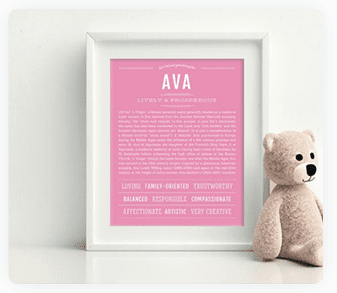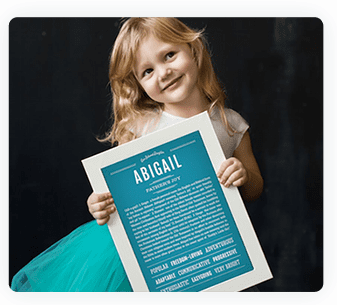Literary Characters
OF THE BABY NAME JANE
Bertha Mason is the famed mad wife in the attic in Charlotte Brontë’s masterpiece, Jane Eyre: An Autobiography, published in 1847. Poor Bertha is our candidate for one of the top ten victims of cruel fate and crueler companions in all literature! First, she is born half English and half Creole – in her time and place, this puts her right outside the box right away. Then apparently she inherits a strain of madness that runs in
her family. Then she is married off to Mr. Rochester, who pretty promptly locks her up with only a careless, drunken servant to tend to her. And then, Mr. R. pulls the bigamy card. Wouldn’t you scream, yell, rip up wedding veils and burn down houses, too? Of course you would, and probably with great glee. Critics often point to Bertha Mason as an embodiment of the plight of the Victorian woman writer – if so, Ms. Brontë was one ticked-off woman about her status!
Adele Varens is Jane Eyre’s young charge at Thornfield in Charlotte Bronte’s 1847 classic, Jane Eyre. Adele was abandoned by her French mother, with whom Mr. Rochester once had an affair, to his care. He does not believe himself to be the child’s father, but he provides her with his careful, if rather distant, guardianship. Adele is ten years old, and her education until the arrival of Jane Eyre had consisted of songs and dances her mother (most inappropriately) taught her. She is rather spoiled and self-centered, but, under the circumstances, that is to be expected. After all…that French influence. The good Jane sets about putting young Adele’s shortcomings to rights; this includes tutelage by herself and later a proper boarding school. All this has a beneficial effect on Adele; she grows into a lovely and mature young lady, at least in Jane’s eyes. We rather think the winnowing out of “her French defects” turns her into someone more suitable to be, well, a proper English governess.
Jane Eyre, Charlotte Bronte’s 1847 novel, is one of the most well-known books of all time, and its hero, Edward Rochester, a paragon of romantic Victorian manhood. The master of Thornfield Hall and guardian of Adele, to whom Jane is governess, he is not particularly handsome, but he is worldly and intelligent, and has led a rather unconventional life by the time Jane meets him. He falls in love with the intelligent and independent Jane, but their marriage is thwarted by the revelation of the existence of his insane first wife, Bertha. Jane refuses to live with him as his mistress and goes her own way. After many Gothic plot twists, Edward and Jane are reunited after he risks his life trying, unsuccessfully, to save Bertha in the fire that destroys their house. Though blinded in the fire, he is able to recover enough sight to look upon the son Jane bears him.
Eleanor is a character in Alice Walker’s 1982 novel, The Color Purple, which was also made into the very successful film of the same name. She is the daughter of the town’s mayor, whom Sofia raises, and who looks to Sofia as a second mother. In the uneven relationship between black and white, Eleanor Jane believes that that is enough to make Sofia love and bless her own child. But Sofia sees the infant boy as just another white, who will grow up into yet another of her many tormentors. As the story ends, Eleanor Jane and Sofia reach a higher level of understanding and faith, but only because Sofia has been brave enough to open Eleanor Jane’s eyes to the banal unconsciousness of the racism she has unwittingly accepted up to now.
Helen Burns is the gentle young friend of Jane in Charlotte Bronte’s 1847 novel, “Jane Eyre”. While Jane herself strives to be good in the face of overwhelming odds, young Helen seems to be to suffering born, to accept her fate and eagerly to await her rewards in another life. Strangely enough, she is not treacly at all, even to our modern senses – she is just pure goodness and innocence, and is much beloved by Jane. Helen, while certainly acknowledging the deplorable conditions at the Lowood School, nonetheless believes that divine reason lies behind all actions, and that we shall be compensated or punished in the after-life. Naturally, she dies a death of consumption at a young age, and, like Jane, we hope with all our hearts that she is right about her beliefs. Helen was most beautifully rendered by a very young Elizabeth Taylor in the 1943 film version.
Jane Eyre is the heroine of Charlotte Brontë’s classic of the same name, first published in 1847 under the pen name of Currer Bell. Readapted into equally classic films and television series, Jane is an enduring and much loved character in literature. Jane is a passionate and intelligent young woman born into straitened circumstances, who makes her way in a difficult world by self-application, honor and dignity. Becoming governess to the socially superior Mr. Rochester’s young charge, Adele, Jane finds herself caught between strong forces that threaten her to the core, yet she perseveres and wins the day, albeit at great cost to herself and with much sacrifice. Jane Eyre is the type of character who meets what life presents to her with a firm and steady gaze, and who tackles her fate with a courage and self-reliance that foreshadow many a lesser feminist heroine of a later date. The Gothic overtones of the novel well enhance the less-than-fairy-tale-ending, in which Jane and Rochester are reunited in legal and sanctified marriage, having endured much in the way of personal suffering and loss.
Jane is Tarzan’s lady-love in the hugely successful series of 24 books by Edgar Rice Burroughs, starting with “Tarzan of the Apes” in 1912. The series has been adapted into countless plays, movies, comics, television series, cartoons and games. Jane is first presented as the classic damsel-in-distress, an American woman who has come to Africa with her professor father, whereupon she gets ambushed by apes and is rescued by Tarzan. Later Jane must be rescued by Tarzan again – in a forest fire in Wisconsin, no less! Over the course of her appearances, she evolves into a very competent woman who is well-matched as Tarzan’s mate and rugged enough to bear his child in a very rustic Africa. She may take a back seat to the Ape-man most of the time, but we’d say, with those credentials, cut her some slack.
Jane is the eldest of the five Bennet sisters in Jane Austen’s 1813 classic, “Pride and Prejudice”. Alas, she is so ego-less as to be almost a cipher. She is described as beautiful, sweet, proper, good, gentle, kind, dutiful, non-judgmental and self-effacing. Yikes. Unlike Elizabeth, who is all fire and tang, Jane is the “good daughter”, destined to be the “good wife” and, no doubt, the “good mother”. What a fate! Well, someone has to do it. She must not be as deadly as all that, however, for Elizabeth is devoted to her and aspires to attain her level of virtue. Charles Bingley, a rich, male version of Jane, loves her dearly as well, and marries her. So, good on Jane. We’re afraid, however, that it will always be the Elizabeths and Darcys who hold our attention.
Miss Jane Marple is Agatha Christie’s marvelous creation, the English-countryside, elderly spinster-sleuth, who first appeared in a short story in 1926 called “The Tuesday Night Club”, and in a full-length novel in 1930, The Murder at the Vicarage. She was featured in over a dozen more Christie novels and short stories and has become a beloved icon as well by way of feature films and television series. Jane Marple is an intelligent woman, beloved in the (surprisingly crime-riddled) village of St. Mary Mead, whose shrewd observations always find the murderer out, no matter how the “proper authorities” may scoff at her methods. Jane Marple is apparently a woman of independent means; although she runs a modest household, she does employ help. She is a clear-eyed assessor of human nature, and no “little-old-lady” viewpoints get in her way! She is also just a teeny bit of a busy-body, poking her genteel nose in where it is not always wanted, but always with successful results, uncovering the guilty and exonerating the innocent. We should all be so lucky as to be so employed in our seventies!
“Just” Jane (who ever heard her surname?) is the sister half of “Dick and Jane” in the iconic children's reading educational series by William Gray and Zerna Sharp, used in American schools from the 1930s through the 1970s. Those of us of a certain age are forever united by our acquaintance with Jane and her family in Anytown, U.S.A. – Dick, Sally, Mother Father, Spot and Puff. See them run. See them play. See them commit unbelievably (unconscious) insensitive sins against a society that might not be Protestant, middle class, Western European based, and utterly bland. Well, to be completely fair, black and other ethnically based characters did appear in the 1960s. Jane is indistinguishable from the rest of her family except insofar as she is a younger female than her mother, and an older one than her sister. But one thing our Jane did have – she had “Fun”! All the time. Running and playing, seeing and doing. Fun. Fun with Dick. Fun with Spot. Strange to say, with all that fun, there was no funny. Ah well, different times…



